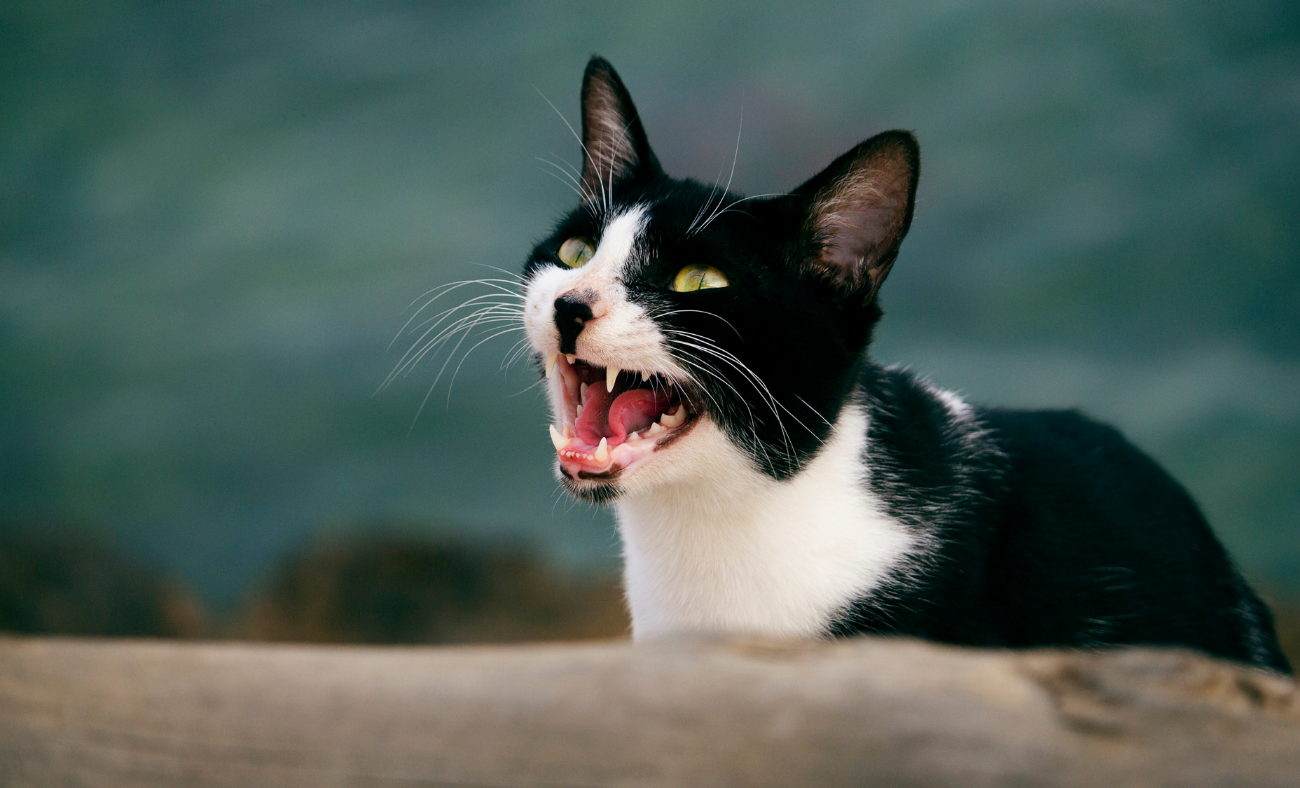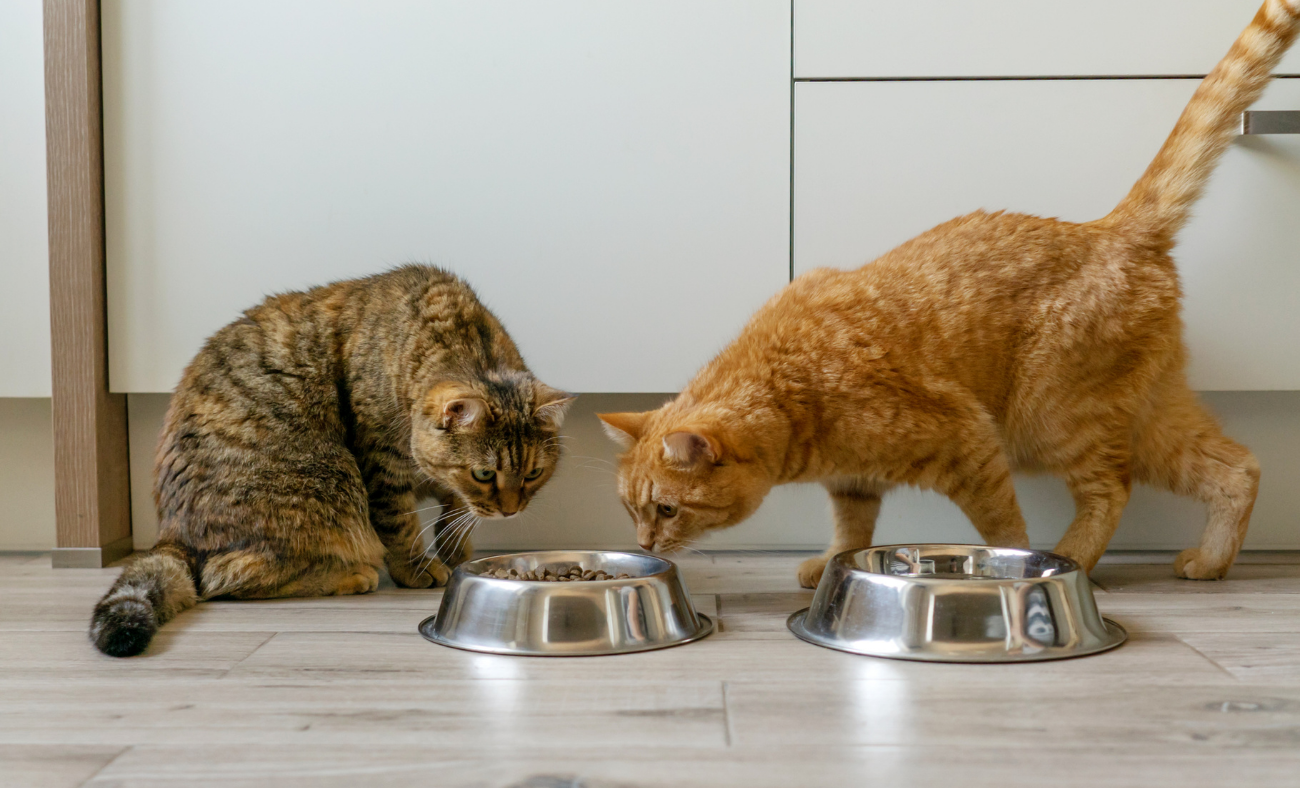That moment when you realize your cat’s meowing has changed? It might be the most important conversation you’ll never have.
I never imagined that the most profound communication breakthrough in my relationship with cats would come not through understanding their body language or behavior, but through learning to truly listen to their voices. After years of developing systematic approaches to feline anxiety, and now studying for my diploma in Understanding Feline Anxiety, I’ve discovered that vocal changes often serve as the earliest and most reliable indicators of cat stress and anxiety.
The revelation came during my kitten’s grief period after losing his sibling at five months old. His crying wasn’t just louder or more frequent – it had transformed into something completely different. The tone, timing, and intensity carried emotional information I’d never learned to decode. This wasn’t ordinary kitten vocalization. It was a sophisticated stress communication system that I’d been missing entirely.
That experience taught me that when cats modify their vocal patterns, they’re not just making noise – they’re providing a real-time audio assessment of their emotional state. Understanding these vocal stress indicators has become one of the most powerful tools in my systematic approach to feline anxiety management.
The Corporate Meeting That Changed How I Listen to Cats
My professional background taught me to listen carefully to subtle changes in communication patterns during high-pressure situations. Colleagues under stress would alter their speaking patterns – voice pitch, frequency of interjections, and even the words they chose differently when anxiety was affecting their performance. These vocal indicators often preceded visible behavioral changes by days or weeks.
I brought this same analytical listening approach to my cats’ vocalizations and discovered that cat anxiety symptoms frequently manifest through voice changes long before obvious behavioral modifications appear. Cats communicate their stress levels through vocal modifications that most parents interpret as personality quirks or random cat chatter, missing crucial early warning signals.
My systematic observation skills helped me recognize that anxious cat behavior includes sophisticated vocal communication that serves multiple purposes: immediate stress release, attempts to get comfort from humans, territorial communication during anxiety, and emotional self-regulation through sound production.
Decoding the Hidden Language of Feline Stress
Cat stress relief begins with understanding that feline vocalizations work on multiple emotional levels at the same time. What sounds like simple meowing to human ears actually contains layers of information about the cat’s current anxiety state, environmental comfort level, and immediate emotional needs.
During my studies for the diploma in Understanding Feline Anxiety, I’m learning that cats possess sophisticated vocal communication capabilities that extend far beyond basic needs expression. Their stress vocalizations can indicate specific types of anxiety, from separation anxiety in cats to environmental stressors and social conflicts that require different intervention approaches.
The vocal patterns I’ve observed in stressed cats follow predictable progressions that match escalating anxiety levels. Understanding these progressions has allowed me to intervene early and prevent stress from reaching crisis levels.
Anxiety in cats often shows up through vocal changes that happen in three distinct categories: frequency modifications (how often cats vocalize), tonal alterations (changes in pitch, urgency, or emotional content), and timing disruptions (when vocalizations occur relative to normal patterns or triggering events).
The Grief Vocals That Taught Me Everything
When my kitten lost his sibling, I witnessed firsthand how profound emotional distress translates into vocal communication changes. His crying wasn’t just increased meowing – it was a complete transformation of his entire vocal repertoire. The plaintive quality, the timing relative to daily activities, and the inability to be comforted through normal means all indicated he was experiencing genuine grief-related anxiety.
My approach to helping him involved the same systematic methodology I’d developed for other anxiety situations. Rather than simply responding to the crying with more attention (which could accidentally reinforce distress vocalizations), I needed to address the underlying emotional need while providing appropriate comfort and security.
The intervention required careful observation of when his vocalizations occurred, what environmental factors seemed to trigger them, and which comfort strategies actually reduced his vocal distress versus those that temporarily quieted him without addressing the emotional source.
I spent additional daily time with him during this period, but I structured these interactions to build his confidence and security rather than simply responding to his crying. This approach helped him process his grief while learning that his emotional needs would be met without requiring distress vocalizations.
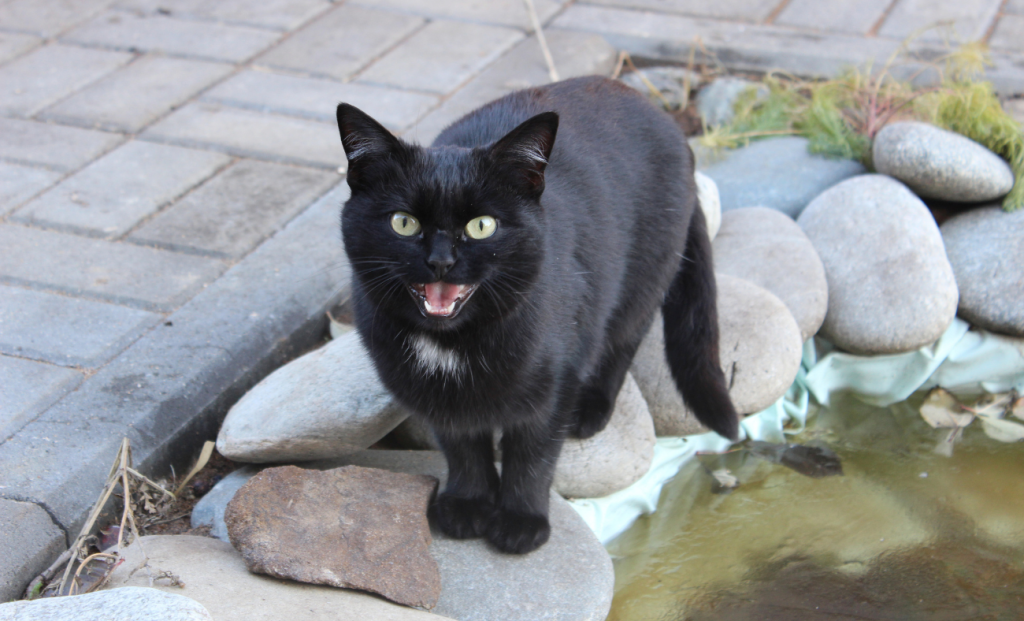
The Five Categories of Stress Vocalizations
Through my experience with anxious cats and my ongoing studies, I’ve identified five distinct categories of stress-related vocal patterns that show different types of feline anxiety:
Distress Communication Vocalizations represent cats’ attempts to communicate immediate emotional discomfort or ask for help. These often sound more urgent, plaintive, or desperate than normal meowing. The tone carries emotional information that suggests the cat feels unable to manage their current stress level on their own.
These vocalizations typically happen in response to specific triggers or environmental changes that make cats feel unsafe or overwhelmed. Unlike attention-seeking meowing, distress communications have a quality that suggests genuine emotional discomfort rather than simple desires for interaction or resources.
Territorial Anxiety Calls show up when cats feel their environmental security is threatened. These vocalizations often sound more assertive or defensive than normal territorial communication, showing that the cat is trying to establish or maintain control over their space while feeling anxious about potential threats.
During my work with my stress-induced cystitis cat, I noticed that her vocalizations during flare-ups often included territorial anxiety calls, particularly when household routines disrupted her sense of environmental predictability and control.
Separation Stress Indicators include the specific vocal patterns that go along with separation anxiety in cats. These typically begin during departure preparation routines and can continue throughout separations. The emotional content often shows distress about upcoming or ongoing isolation from primary attachment figures.
Social Conflict Communications happen when cats experience stress related to relationships with other household pets or family members. These vocalizations often have a different quality than straightforward social communication, showing that the cat feels anxious about social dynamics rather than simply engaging in normal social interaction.
Environmental Overwhelm Expressions happen when cats feel stressed by their physical environment but can’t physically escape or change their circumstances. These vocalizations often happen in response to noise, household activity, or environmental changes that create anxiety without providing obvious behavioral solutions.
Reading the Emotional Content of Cat Voices
Cat stress symptoms expressed through vocalizations carry emotional information that goes beyond simple volume or frequency changes. The pitch, rhythm, and tonal quality give me insights into the specific type of anxiety the cat is experiencing and the urgency of their emotional needs.
Stressed cats often develop vocal patterns that differ dramatically from their normal communication style. A typically quiet cat might become increasingly vocal when anxious, while a normally chatty cat might reduce their vocalizations or change their tone in ways that show emotional distress.
The timing of stress vocalizations gives me crucial information about triggers and anxiety patterns. Cats who vocalize excessively during specific times of day, in response to particular environmental changes, or in anticipation of routine disruptions are giving me valuable information about their stress management needs.
My analytical approach to understanding these patterns involves tracking not just when vocalizations happen, but also their emotional content, the environmental context, and my cats’ responses to different comfort and intervention strategies.
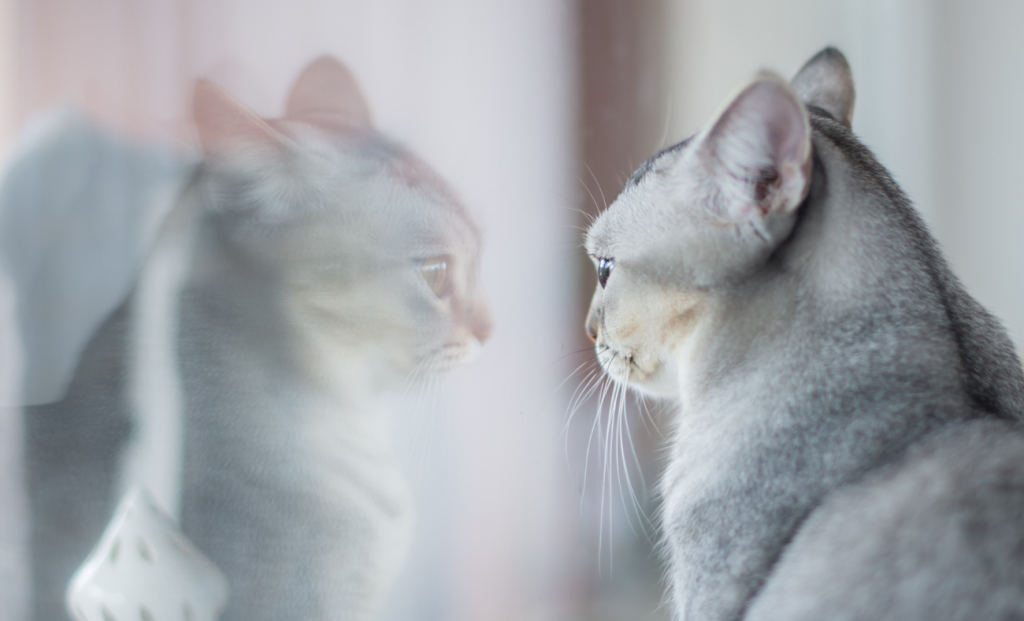
Environmental Factors That Trigger Vocal Stress
Through my systematic observation of cats in various stress situations, I’ve identified environmental factors that consistently trigger vocal anxiety responses. Understanding these triggers allows me to make proactive environmental modifications that reduce the likelihood of vocal stress behaviors.
Household noise levels dramatically impact feline vocal stress patterns. Cats experiencing anxiety often become more sensitive to sounds that previously didn’t bother them, leading to vocal responses that show environmental overwhelm rather than specific threat response.
Changes in household routines frequently trigger vocal anxiety, particularly in cats who use routine predictability to manage underlying stress. The vocalizations that go along with routine disruptions often show that the cat feels their security system has been compromised.
Separation anxiety in cats often shows up through vocal patterns that begin during departure preparation activities, suggesting that cats learn to recognize environmental cues that predict separations and begin their stress response before the actual departure happens.
The presence or absence of other pets also contributes to separation anxiety in cats and dramatically affected vocal stress patterns. Some cats find comfort in the presence of other animals during stressful periods, while others experience increased vocal anxiety when the social dynamic changes and they are no longer around.
Creating Systematic Vocal Comfort Strategies
Cat stress relief for vocal anxiety requires understanding the difference between responding to the vocalizations themselves versus addressing the underlying emotional needs that drive them. My systematic approach involves identifying the emotional content of the vocalizations before I determine appropriate intervention strategies.
Environmental modifications that address vocal stress include creating quiet sanctuary spaces where cats can retreat when feeling overwhelmed, reducing household noise levels during predictable stress periods, and maintaining consistent routines that give cats emotional security.
The sanctuary approach I developed for my cystitis cat proved essential for managing her vocal stress. Giving her a private, quiet space where she could retreat without needing to vocalize her distress helped reduce her overall anxiety levels and gave her a reliable coping mechanism.
Comfort strategies that address vocal anxiety must be carefully timed and implemented to avoid accidentally reinforcing distress vocalizations while still giving appropriate emotional support. This requires understanding the difference between responsive care and reward-based reinforcement.
The Role of Human Response in Vocal Stress Cycles
How cat parents respond to stress vocalizations dramatically influences whether these patterns escalate or resolve. My experience has taught me that immediate emotional reactions to distressed cat vocalizations often increase rather than reduce the underlying anxiety that drives them.
Cats experiencing anxious cat behavior through vocalizations need consistent, calm responses that address their emotional needs without creating dependency on vocal distress to get attention or comfort. This balance requires understanding each cat’s individual communication style and anxiety triggers.
My approach involves acknowledging the vocalization to show that I’ve heard their communication, then giving appropriate comfort or environmental modifications based on the likely underlying cause rather than simply trying to stop the vocalizations immediately.
Advanced Vocal Pattern Recognition
As my understanding of feline vocal communication has deepened through both experience and formal study, I’ve learned to recognize subtle vocal indicators that predict escalating anxiety before it reaches crisis levels. These early warning vocalizations allow me to intervene proactively and prevent more serious stress behaviors.
Cat anxiety often progresses through predictable vocal stages, from subtle tonal changes in normal vocalizations to more obvious distress calls. Recognizing these progressions allows me to intervene early and address anxiety before it becomes overwhelming for the cat.
The vocal patterns associated with different types of stressors help me determine appropriate intervention strategies. Separation anxiety in cats produces different vocal characteristics than territorial stress or social anxiety, requiring targeted approaches that address the specific emotional need.
Integration with Physical and Behavioral Stress Indicators
Vocal stress patterns rarely happen in isolation but typically go along with other cat stress symptoms that give me additional information about the cat’s emotional state and needs. My systematic approach involves evaluating vocal changes within the context of overall behavioral and physical indicators.
Cats experiencing multiple stress indicators at the same time often show more dramatic vocal pattern changes, telling me that their coping mechanisms are becoming overwhelmed and they need more comprehensive intervention strategies.
The progression from subtle vocal changes to more obvious distress indicators helps me determine the urgency and scope of intervention needed. Early vocal changes might be addressed through environmental modifications, while more dramatic vocalizations often tell me that comprehensive anxiety management approaches are necessary.
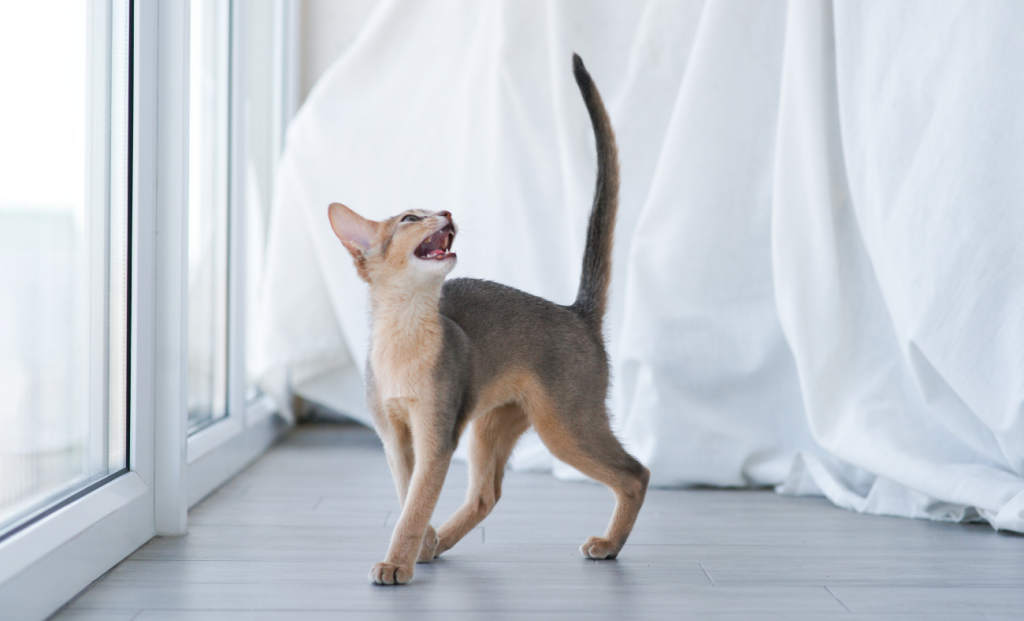
Building Long-Term Vocal Communication Understanding
Cat stress relief through vocal communication understanding becomes an ongoing partnership between cats and their humans. The goal isn’t to eliminate all stress vocalizations but to understand their meaning well enough to give appropriate support and environmental modifications.
My systematic approach to vocal stress management has evolved into a comprehensive communication system that helps me understand my cats’ emotional needs and respond with appropriate environmental and emotional support that builds their confidence over time.
The cats who develop the strongest emotional resilience are those whose humans have learned to interpret their vocal communications accurately and respond with consistent, appropriate support that addresses underlying needs rather than simply managing symptoms.
Your Cat’s Voice as a Window to Their Inner World
Understanding vocal stress patterns transforms the daily experience of living with cats from reactive problem-solving to proactive emotional support. When you learn to hear the emotional content in your cat’s vocalizations, you gain access to real-time information about their stress levels and emotional needs.
The systematic approach to vocal communication that I’ve developed gives you a framework for understanding your cat’s unique stress communication style and developing targeted strategies that address their individual anxiety patterns and triggers.
Whether your cat expresses stress through increased vocalizations, unusual quietness, or changes in the emotional content of their normal communications, learning to interpret these signals opens the door to more effective support strategies that address their actual emotional needs.
Cat anxiety expressed through vocal patterns represents sophisticated communication that deserves the same careful attention we give to any other aspect of feline health and wellbeing. Your commitment to understanding and responding to these vocal stress indicators demonstrates the kind of systematic, compassionate care that creates the foundation for genuine feline emotional wellness.
Every vocal stress signal your cat provides is an opportunity to deepen your understanding of their emotional world and respond with the kind of protective, systematic support that transforms anxiety into confidence and distress into serenity.
That’s why I developed the Cat Stress Assessment Checklist – to help cat parents like you recognize these crucial vocal indicators alongside other stress signals, creating a comprehensive understanding of your cat’s emotional wellbeing and the tools to support them through any anxiety they may experience.
So, if you’re ready to dive deeper into your cat’s emotional wellbeing, then download our FREE comprehensive Cat Stress Assessment Checklist: The Essential 12 Hidden Signals. This will enable you to systematically assess your cat’s current stress levels and create a personalized plan for building their emotional resilience.This practical tool guides you through the subtle signs of cat anxiety and provides actionable steps for creating the serene environment your cat truly deserves.
